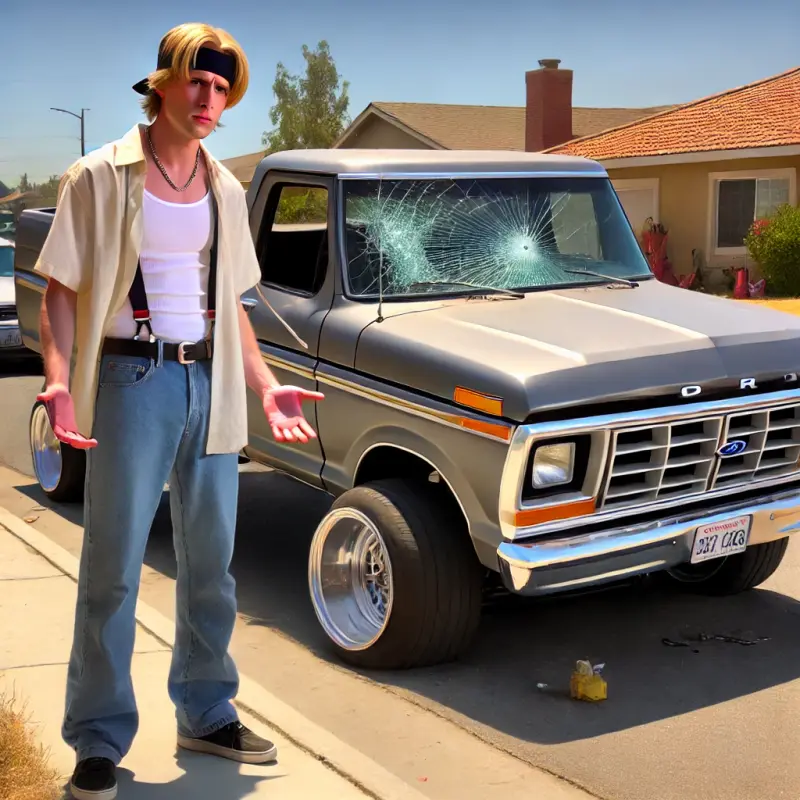Introduction
When you think about maintaining your vehicle, your mind might jump straight to oil changes, tire rotations, or even that pesky engine light. But what about your windows? Automotive windows often get overlooked until a crack or chip mars their pristine surface. The truth is, Common Causes of Automotive Window Damage can happen to anyone, anywhere.
In this article, we’ll dive deep into the various reasons behind automotive window damage and how you can prevent it. Whether it's a sudden hailstorm or an errant pebble flying up from the road, understanding these causes will help you take better care of your car’s glass. Plus, we’ll touch on the importance of Auto Glass Replacement and how timely action can save you from bigger headaches down the road.
Understanding Auto Glass: Types and Importance
What Are the Different Types of Auto Glass?
When it comes to vehicle windows, there are mainly three types:
- Laminated Glass: Often used for windshields; this type consists of two layers of glass with a plastic interlayer in between. Tempered Glass: This is commonly used for side and rear windows. It’s heated and cooled rapidly to strengthen it. Tinted Glass: This glass is coated with a film that reduces glare and UV exposure.
Why Is Auto Glass Important?
Your vehicle's auto glass does more than just keep the wind out; it plays crucial roles in safety and structural integrity. For instance, windshields are designed to support the roof during a rollover accident. Poor quality or damaged glass can compromise these safety features.
Common Causes of Automotive Window Damage
Automotive window damage can occur due to various factors. Understanding these causes can help you avoid them in the future:
1. Environmental Factors
Weather Conditions
One major cause Forest Oaks Auto Glass of automotive window damage is severe weather conditions. Rain, snow, extreme heat, and cold can all have adverse effects on auto glass.
- Hail: A sudden hailstorm can leave pockmarks or cracks in your windshield. Extreme Heat: High temperatures can cause expansion in the glass, leading to stress fractures. Cold Weather: Rapid temperature changes can make existing chips worse.
Pollution
Airborne pollutants like acid rain or industrial fallout can etch surfaces over time. Regular cleaning helps mitigate this effect but isn’t always foolproof.
2. Road Hazards
Flying Debris
You’re driving along when suddenly—bam! A rock flies up from a passing truck's tires. It’s one of the most common causes of chips and cracks in windshields.
Potholes
Hitting potholes not only affects your tires but also sends shockwaves through your vehicle structure, potentially damaging windows as well.
3. Accidents
Collisions
Whether it's a minor fender bender or a serious crash, accidents inevitably lead to window damage more often than not.
Vandalism
Unfortunately, vandalism is another sad reality for many car owners. Broken windows from theft attempts may require immediate attention for both safety and security reasons.
4. Wear and Tear
Aging Windows
Like everything else in life, auto glass ages too! Over time, seals weaken which increases susceptibility to chips and cracks.
Improper Installation
If auto glass was improperly installed initially—using low-quality materials or incorrect seals—it could lead to problems later on.
5. Temperature Fluctuations
Rapid temperature changes can be detrimental to automotive windows as well. For example:
- Parking in direct sunlight followed by immediate air conditioning use could lead to thermal stress.
It’s essential to gradually acclimate your car before blasting the AC after parking outside on a hot day!
Signs Your Auto Glass Needs Attention
Recognizing when something’s wrong with your auto glass is key:
1. Cracks or Chips
If you notice any visible damage, it's prudent to get it checked out right away!

2. Discoloration
This might indicate delamination or degradation of the glass material itself.
3. Sound Changes
Unusual sounds while driving? That could signal loose fragments rattling around!
Preventive Measures for Automotive Window Damage
Now that we've reviewed some common causes let's discuss ways to protect your automotive glass:
1. Regular Inspections
Schedule routine checks at least twice a year! Catching issues early saves time and money later on!

2. Use Protective Films
Consider adding protective films that shield against UV rays and flying debris without compromising visibility!
3. Be Mindful While Driving
Stay aware of road conditions! Avoid tailgating large trucks carrying gravel or debris whenever possible!
What To Do When You Encounter Window Damage?
If you find yourself facing window damage despite taking precautions:
Assess the Damage- If it’s less than six inches long without multiple branches—it may only need repair.
- Look for trusted professionals who specialize in Auto Glass Replacement!
- Document everything; take photos pre-and post-repair for insurance purposes!
The Process of Auto Glass Replacement: What To Expect?
When needing replacement rather than repairs:
Step-by-Step Breakdown:
Remove Old Glass- The technician carefully removes broken pieces without damaging surrounding areas.
- Any remaining adhesive residue must be cleaned thoroughly.
- They’ll fit new auto glass using high-quality sealants ensuring an airtight fit!
4 . Final Inspection
- Before handing back keys—an inspection ensures everything aligns correctly!
FAQs About Common Causes of Automotive Window Damage
Q1: Can I drive with a cracked windshield?
Absolutely not! It's dangerous as visibility gets compromised! Get it fixed ASAP!
Q2: How much does auto glass replacement cost?
Costs vary based on make/model but typically range between $200-$500.
Q3: Should I repair my windshield chip myself?
DIY kits exist but aren’t always effective—consult professionals for best results!
Q4: Will insurance cover auto glass replacement?
Most comprehensive policies do cover it—check with yours directly!
Q5: How long does an auto glass repair take?
Repairs generally take about an hour while replacements may require several hours depending on complexity.

Q6: Is there any warranty on new installations?
Many reputable shops offer warranties ranging from one year up—to lifetime coverage depending on terms selected!
Conclusion
Understanding the Common Causes of Automotive Window Damage equips you with knowledge that makes all the difference when safeguarding one vital aspect of your vehicle—the windows! From environmental factors like weather conditions to regular wear-and-tear scenarios—it pays off big time knowing how preventable many damages are through simple measures taken proactively before they escalate into costly repairs down-the-line! Remember that investing in quality materials during replacements ensures longevity too so don’t skimp where safety matters most!